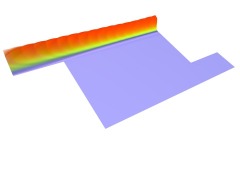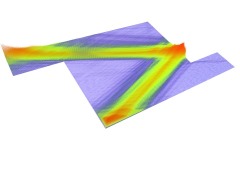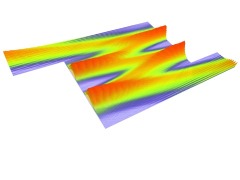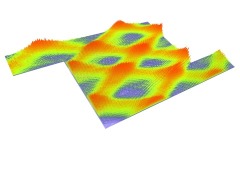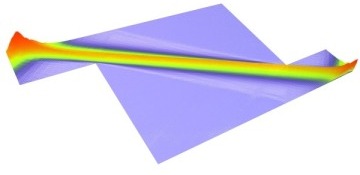Frequently Asked Questions
What is the most important result reported in your article?
We present a recipe for generating non-diffracting wave beams in scattering
through complex systems like cavities or disordered media.
Our approach relies solely on the
knowledge of the system's scattering matrix.
For which types of waves does your procedure work?
The concepts which we put forward in our article are not restricted
to a particular type of wave, i.e., they work for acoustic, optical or
quantum waves alike. For all these cases our procedure allows to create
special waves which follow the trajectory of a particle in space. One can
think of these wave states as of a highly directional beam as emitted,
e.g., from a laser pointer. In this very familiar case, however, the
wavelength of the corresponding light wave is many orders of magnitude
smaller than the typical dimensions of the space where the wave propagates
after being emitted. What we demonstrate in our article is how such
particle-like beams can be generated even when the wavelength is not too far
away from the surrounding spatial dimensions – as for sound waves
propagating in a room.
Can your ideas be realized in the experiment?
Our work was strongly inspired by recent experiments in which the
scattering matrix of very complex systems could be extracted
(see the
"Useful links" below for more information). These techniques
which are now available should be the ideal tools to realize
our concepts in the lab.
What kind of applications do you have in mind?
We believe that the special states which we discuss
have a number of immediate advantages for
applications in which a wave signal needs to be transmitted from one point
to another: Due to their high directionality our beam states should not only
allow to save power in the generation of the signal, but also maximize the
signal reception. Also, when directing the beam directly to a receiver it
would be much harder for an eavesdropper to intercept the signal
transmission. Certainly also medical applications are conceivable where our
concepts could be used to keep a light or ultrasound beam focused when
scattering through a medium like human tissue. We have, however, not yet
studied such questions explicitly.
 This web page contains information about our recent Letter "Particlelike Scattering States in Wave Transport".
This web page contains information about our recent Letter "Particlelike Scattering States in Wave Transport".
